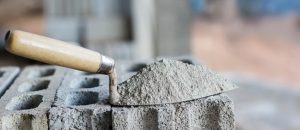TYPES OF CEMENT USE IN CONSTRUCTIONS

Ten different types of cement were used in the construction industry for different purposes
- Ordinary Portland cement
- Low-Alkali cement
- Blended cement
- Portland pozzolana cement(PPC)
- Sulphate resisting Portland cement
- Oil well cement
- White cement
- Low heat Portland cement
- Hydrophobic cement
- Portland slag cement
Ordinary Portland Cement(OPC)
Three different grades of OPC were produced to overcome the different grades of concrete standards. These classifications were totally based on the compressive strength which was achieved after 28 days.
Grade 33 ordinary Portland cement conforming IS:269-1989
Grade 43 ordinary Portland cement conforming IS:8112-1989
Grade 53 ordinary Portland cement conforming IS:12269-1987
These grades indicate the compressive strength in N/mm2 at 28 days. e.g Grade 33 has 33 N/mm2 strengths.
Low-Alkali Cement
There is no separate standard for low-alkali Portland cement. The silica and carbonates in aggregate were reactive, so when those elements were present, then alkali in cement was restricted to 0.6% of soda.
To avoid the Alkali-Aggregate reaction which produce cracking and destruction of concrete. To avoid this reaction we use Low-alkali Portland blended cement.
Blended Cement
Blended cement has almost similar to the OPC but has certain improved properties owing to the presence of the blending material in it. Both fresh and hardened concrete properties was sufficiently improved by the use of blended cement.
The bond between cement paste and aggregate surface “interfacial zone” properties were sufficiently improved because of the refinement of pore structure and pore size in the blended cement.
Portland Pozzolana Cement (PPC)
This cement was to be manufactured by grinding the clinker, gypsum and pozzolana such as fly ash. The portion of fly ash in PPC was 15% to 35% by the weight of cement.
Portland Blast-Furnace slag cement (PBSC)
This cement was the mixture of clinker and granulated blast-furnace slag. The slag constituent should remain in between 35% to 70%(IS:455-2000).
The PBSC has great chemical attack resistance power, Fineness, corrosion resistance power, lower permeability as compared to ordinary Portland cement OPC.
Portland Slag Cement (PSC)
This cement was used in the place of OPC in all construction jobs. This cement was mainly used in mass concrete works such as dam, retaining wall and bridge abutments and those structures which was exposed to sulphate-bearing soils.
Sulphate resisting Portland cement
Sulphate resisting Portland cement (SRPC or SRC) was responsible to counter the sulphate attack. The soluble sulphate such as sodium sulphate and calcium sulphate.
SRPC has low tricalcium aluminate content, which helps to avoid the sulfate attack. The cement was strongly recommended in structures which are located in marshy land, Creek areas, coastal areas, seawater and other soluble sulphate salts.
Low heat Portland cement
The low heat Portland cement was manufactured in that way so it produces low heat during the hydration reactions.
Hydrophobic cement
The hydrophobic cement was manufactured by adding water, repellent chemicals in OPC clinker, at the grinding stage.
The requirement and properties of hydrophobic cement were described in IS:8043-1991.
Oil well cement
This cement was specially manufactured for the oil well drilling to fill the wall and steel casting spaces. Under the control high temperature and pressure it sets. It develops strength rapidly and remain in position under high temperature.
White cement
Due to the presence of iron oxide in ordinary Portland cement, it shows grey colour. In white cement, the iron oxide was limited to 1%.
The white cement was mainly used for the decorative purposes. The white cement must fulfil the requirement of IS:269-1989.
Civil Notes App:-
Quantity surveying, Concrete, Steel, Notes available in this Android App.
Click on the Below Picture to Download free from play store.

Add a Comment
You must be logged in to post a comment.

thankyou